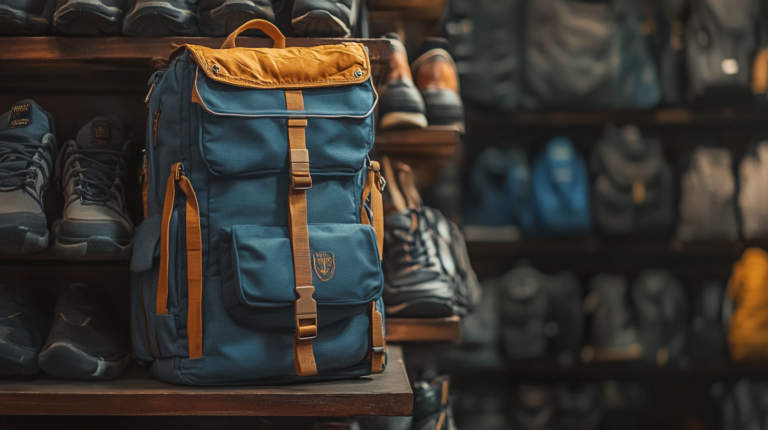Business Travel 2025: Bleisure, Tech, and ROI
1. Bleisure and Hybrid Work Models

I’ve noticed a huge surge in travelers seeking to blend work and leisure, creating a new kind of balance where conferences and client meetings sit comfortably alongside weekend getaways. According to a recent study by the Global Business Travel Association (GBTA), 82% of professionals say they plan to maintain or even increase their trips this year, and a striking 74% of them are weaving in personal time to explore destinations. I’ve chatted with colleagues who relish the chance to hop on a midweek flight for a meeting, then stay on through Saturday to taste local cuisine or tour cultural hotspots.
Hybrid work models make this growing bleisure trend easier and more practical. I’ve personally experimented with turning a quick business meeting in Atlanta into a mini-vacation by logging into my remote workspace for an afternoon and then exploring the city’s vibrant music scene at night. This approach is particularly appealing to younger travelers—many of them Gen Z and millennials—who prefer to maximize every moment on the road. With flexible schedules becoming more common, companies are revisiting their policies to accommodate employees eager for this productive-meets-playful dynamic.
Interestingly, some research hints that men and women differ in how they secure valuables while traveling. I’ve seen colleagues who store passports in imaginative hiding spots within their luggage, while others prefer more high-tech solutions like travel locks with built-in alarms. These personal preferences shed light on the varied needs of a workforce that’s more diverse and global than ever. No matter your style, having a plan for personal security and peace of mind is key to making the most of any bleisure trip.
2. Eco-Friendly Travel Takes Center Stage

Another theme I’ve witnessed firsthand is the increased emphasis on going green. Whether it’s offering carbon offset options or switching to fuel-efficient aircraft, companies are stepping up their sustainability game. A recent report from BCD Travel‘s 2025 Market Report outlines eight key areas where organizations can reduce their carbon footprint, from more mindful air travel routes to encouraging travelers to use public transit at their destinations. I’ve even switched to reusable water bottles and digital boarding passes as part of my own small contribution.
Despite rising costs and inflationary challenges, many businesses see the long-term upside of sustainable efforts. Industry data in 2025 shows that global corporate travel spending is edging toward 1.48 trillion dollars, so it’s no surprise managers are eager to find ways to minimize environmental impact while maximizing ROI. Some travelers I’ve spoken with now specifically sway toward eco-responsible hotels that use solar power or have robust recycling programs, underscoring how personal ethics and corporate goals are aligning.
In my experience, the most successful eco-friendly travel initiatives are those that blend responsibility with convenience. Programs that encourage greener choices—like rideshare incentives or partnerships with eco-certified transport providers—tend to be embraced by employees at all levels. It’s a win-win scenario: you get to shrink your carbon footprint while still reaping the benefits of face-to-face interactions and global connections.
3. Tech Innovations Shaping Tomorrow

I’ve always believed that technology has the power to transform even the most routine trip into a seamless experience. In 2025, AI-driven booking platforms are smarter than ever, personalizing itineraries based on past preferences and corporate policies. I recently tested a virtual payment portal that granted me greater control over my budget without juggling physical cards. It saved me hours on expense reports—truly a time-saver for anyone who’s ever had to keep track of endless paper receipts.
Meanwhile, augmented reality collaboration tools are making a splash in the business realm. Some big tech firms are piloting VR-based meeting environments that let you walk through a virtual conference hall right from your living room. In my own travels, this has meant being more selective about when I need to be physically present. If a VR meeting can replicate a standard review session, I’d rather save the flight for crucial face-to-face negotiations or major product launches, where personal interaction carries more weight.
Speaking of essential tools, platforms like TravelBank, Routespring, and Airssist are shaping up to be game-changers. TravelBank’s AI-tracking for expenses can automate nearly everything, while Routespring offers real-time spending controls, letting managers spot any budget red flags instantly. Airssist, on the other hand, provides premium concierge services at airports—a dream come true when you’re racing between layovers or need help navigating unfamiliar terminals. These solutions collectively demonstrate how tech can streamline each stage of the journey, from planning to arrival.
4. Financial Tools and Expense Evolution

Over the past year, I’ve witnessed a definite shift toward virtual cards and embedded finance protocols. Instead of dealing with physical receipts or swiping a corporate card, you can manage everything on a digital dashboard. Reed & Mackay‘s Business Travel Trends: Predictions 2025 backs this up, highlighting how the integration of contactless payments and virtual wallets is transforming expense management. From my perspective, tapping your phone to pay for a ride share is a far cry from tediously itemizing taxi bills upon returning home.
This isn’t just about convenience—it’s about ROI. According to a joint study conducted with nearly 300 travel professionals by the GBTA, optimizing costs on hotels, car rentals, and other essentials remains a priority. I’ve been part of roundtable discussions where managers focused on standardizing bookings through single platforms, which can yield better negotiated rates and clearer oversight. This can mean significant savings over the course of a fiscal year.
Personally, I’ve come to appreciate the benefits of data integration across different tools. When I book a room, for instance, my itinerary automatically updates in my company’s scheduling app, and any associated expenses pop into our finance system. This kind of synergy keeps me organized and ensures I stick to the budget while still enjoying a comfortable experience on the road. It’s about ensuring every trip brings genuine value back to the business.
5. What It All Means for Frequent Flyers

All these shifts—bleisure travel, sustainability, advanced tech, and evolving financial tools—add up to a new golden age for frequent flyers. Instead of merely punching your ticket from Point A to Point B, you can now tailor your journey for both productivity and personal satisfaction. Many travelers I meet want to squeeze in that local art exhibit, schedule a team brainstorming session, and still have time for a solid night’s rest.
As businesses continue to fine-tune their corporate travel programs, frequent flyers have an unprecedented level of choice and flexibility. In my view, integrated booking platforms that track loyalty points, carbon offsets, and budget guidelines all in one place are the ultimate travel companion. It’s not just about racking up miles anymore; it’s about making every mile count toward a broader, more responsible travel strategy.
At the end of the day, frequent flyers now have more control, richer experiences, and a greater sense of purpose. You’re contributing not only to your organization’s goals but also to more sustainable and efficient travel practices worldwide. It’s a gratifying time to be in the skies, and I’m genuinely excited to see how this trend continues to evolve.
Final Thoughts

Business travel in 2025 has grown far beyond traditional working lunches and rushed check-ins. Between the rise of bleisure trips, eco-awareness, and cutting-edge tools that smooth out every detail, it’s an era defined by flexibility and customization. Companies have recognized that well-rested, well-prepared travelers bring more value and better ideas to the table.
With more data-driven insights available than ever, organizations can offer employees streamlined trip-planning, transparent expense management, and a deeper focus on overall wellness. If done right, these improvements benefit both the bottom line and the traveler’s personal journey, nurturing a culture where everyone thrives—businesses and individuals alike.
Barry B.’s Take
To me, the real magic of business travel lies in how it can seamlessly intertwine personal growth with professional objectives. When I step off a plane in a new city, I’m not just checking off a business obligation—I’m grabbing the chance to discover new perspectives, local habits, and refresh my own thinking.
I believe travel is all about the human experience, and every venture into the skies has a story waiting to be told. The sweet spot is where technology, sustainability, and financial savvy come together to make those stories more vibrant, more meaningful, and a lot more fun.







